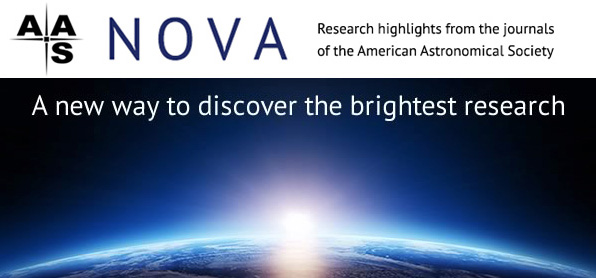Highlights from AAS Nova: 13-26 November 2016

Susanna Kohler American Astronomical Society (AAS)
AAS Nova provides brief highlights of recently published articles from the AAS journals, i.e., The Astronomical Journal (AJ) and The Astrophysical Journal (ApJ), ApJ Letters, and ApJ Supplements. The website's intent is to gain broader exposure for AAS authors and to provide astronomy researchers and enthusiasts with summaries of recent, interesting research across a wide range of astronomical fields.
The following are the AAS Nova highlights from the past two weeks; follow the links to read more, or visit the AAS Nova webpage for more posts.
23 November 2016
X-Ray Background from Early Binaries
What impact did X-rays from the first binary star systems have on the universe around them? A new study suggests this radiation may have played an important role during the reionization of our universe.
22 November 2016
The True Colours of a Blue Straggler
Astrobites tackles the question of where blue straggler stars come from — as well as where they’re going.
21 November 2016
Featured Image: A Comet’s Coma
These images of comet 67P mark the first time we’ve been able to study the inner coma of a comet at this level of detail.
18 November 2016
AAS Publishing News: A Second Round of AASTex Improvements
Are you an astronomer considering submitting a paper to an AAS journal? If so, this post is for you! Read on to find out what’s new in the latest update to AAS’s LaTeX class file, available for download now.
16 November 2016
Hunting for Cosmic-Ray Origins with SuperTIGER
The SuperTIGER experiment flew over Antarctica for 55 days, collecting millions of galactic cosmic rays. What can it tell us about the origins of these high-energy particles?
15 November 2016
Investigating One of the Strongest Starbursts in the Universe
Astrobites reports on an extreme distant galaxy that has one of the highest star formation densities of any known galaxy in the universe.
14 November 2016
An Exoplanet Spinning Up Its Star
A recently discovered, unusual hot Jupiter may be causing its star to spin faster than it should.


